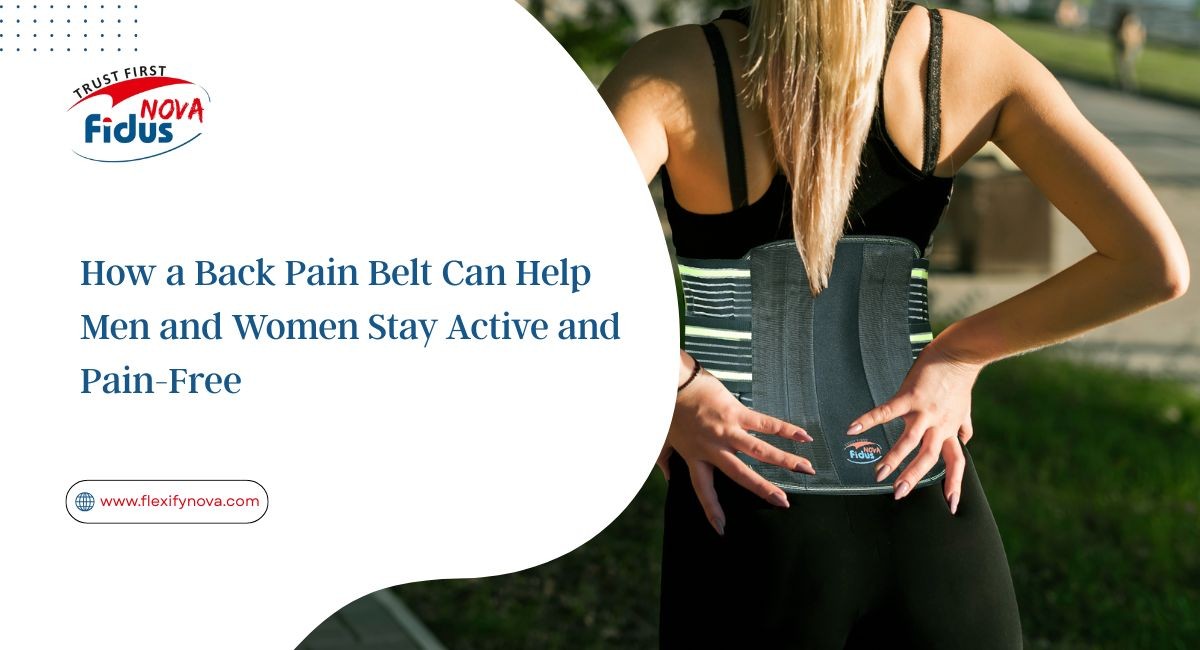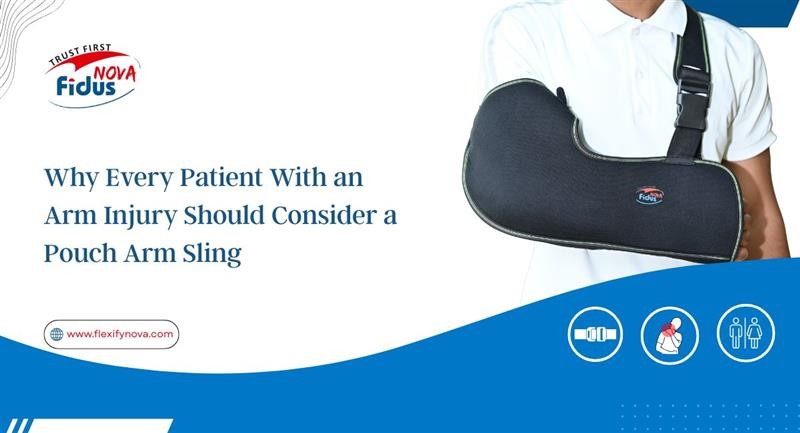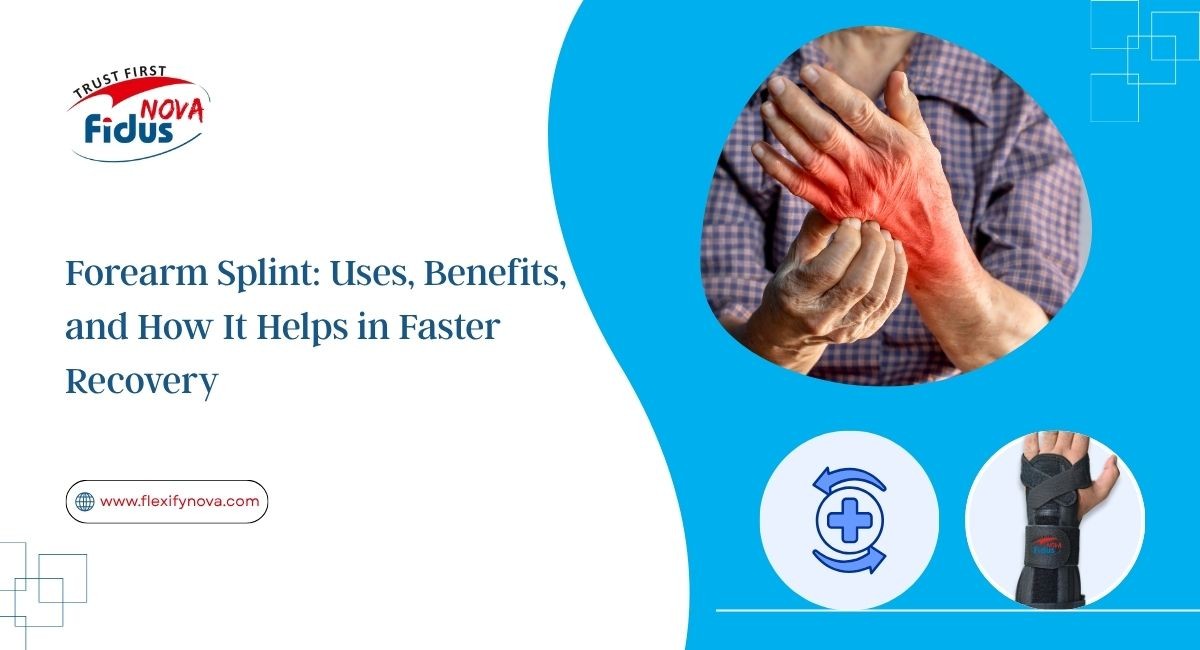Back pain has become one of the most common health problems in today’s modern lifestyle. Whether you are a corporate professional who spends long hours sitting at a desk, a homemaker managing household chores, a gym enthusiast lifting weights daily, or a senior citizen dealing with age-related discomfort, back pain affects almost everyone at some stage of life. Thankfully, a back pain belt has emerged as a practical and effective solution to manage discomfort, support recovery, and improve daily mobility.
A wrist and forearm splint is designed to provide stability to the spine, reduce strain on the lower back, and prevent further injury. Lightweight and easy to wear, it enables people to maintain an active lifestyle while managing mild to chronic back pain. In this blog, we will explore how a back pain belt works, its benefits, who should use it, and tips for safe usage.
Understanding Back Pain: A Growing Issue
Before discussing the benefits of a back pain belt, it is essential to understand why back pain happens. Common causes include:
Poor posture due to prolonged sitting or incorrect standing position
Muscle strain from lifting heavy objects or wrong gym techniques
Sedentary lifestyle, resulting in weak back and core muscles
Spinal conditions such as a herniated disc, sciatica, or spondylitis
Stress and obesity, which put unnecessary pressure on the spine
Ageing, leading to joint degeneration or arthritis
While medication and physiotherapy are often recommended, many people seek additional support for daily movement. This is where a back pain belt becomes beneficial—by offering structural support and comfort.
What Is a Back Pain Belt?
A back pain belt, also known as a lumbar support belt, is a specially designed belt that wraps around the lower back and abdomen. Made with elastic and breathable materials, it provides compression, stabilises the spine, and reduces muscle tension during movement. Many belts come with adjustable straps, stays, or padding to offer customised support based on pain level and activity type.
How Does a Back Pain Belt Work?
A back pain belt works using three key principles:
1. Compression Support
The belt applies gentle pressure around the lower back area. This compression increases blood circulation, relaxes muscles, and reduces swelling due to strain or injury.
2. Spinal Alignment
When worn correctly, it helps maintain a neutral spine posture by preventing slouching or awkward movements that aggravate back pain.
3. Reduced Load on the Spine
The belt redistributes the body’s weight away from the lower back muscles and spine, giving them a chance to rest and recover without overexertion.
Benefits of Using a Back Pain Belt
Using a back pain belt has multiple physical and lifestyle benefits for both men and women:
Pain Relief During Daily Activities
Whether you are cooking, driving, working at a desk, or walking, a back pain belt offers meaningful support to reduce discomfort.
Improved Posture
Long hours of computer work or smartphone usage cause poor posture. Wearing a back support belt reminds your body to stay upright and aligned.
Support During Exercise
Athletes, bodybuilders, and fitness enthusiasts often suffer from lower back strain. A back belt provides stability while lifting weights or doing intense workouts.
Helpful for Heavy-Duty Jobs
Men and women working in physical jobs like construction, warehousing, delivery, or factory work benefit from reduced load on the spine while lifting or bending.
Faster Recovery from Injury
If you have a muscle sprain, ligament tear, or slipped disc, wearing a back belt as recommended by a doctor can speed up healing by reducing unwanted movements.
Prevents Further Injury
Even if your pain is mild, using a belt during risky movements helps prevent future damage to the spine or lower back.
Suitable for All Ages
From young adults to seniors, anyone can use a back pain belt safely with proper guidance.
Types of Back Pain Belts
There are several types of belts available depending on the condition:
Type of Belt
Purpose
Elastic Support Belt
Ideal for mild pain and posture correction Orthopaedic Lumbar Belt
Suitable for chronic pain and medical conditions
Magnetic Back Belt
Claims to improve blood flow and muscle relaxation
Weightlifting Belt
Used during gym workouts to prevent back strain
Posture Corrector Belt
Helps align spine and shoulders
Who Should Use a Back Pain Belt?
- A back pain belt can be used by:
- Office workers experiencing posture-related pain
- Homemakers doing repetitive bending and lifting
- Gym-goers performing squats, deadlifts, or bodyweight training
Drivers travelling long distances
- Senior citizens with lower back weakness
- Patients recovering from surgery or back injury (under medical supervision)
- People with spondylitis, disc problems, or sciatica pain
How to Use a Back Pain Belt Correctly?
Using a back belt is simple, but it must be done correctly to avoid overuse or dependency:
Step-by-Step Guide
Position the belt around your lower back, just above the hips.
Fasten the straps snugly but not too tightly—ensure you can breathe comfortably.
Wear it only during activities like walking, exercising, sitting for long hours, or lifting objects.
Avoid wearing it all day—prolonged usage weakens back muscles.
Consult a doctor if pain persists or if you have a medical condition.
Daily Activities Where a Back Belt Helps
- Lifting groceries or children
- Household chores like sweeping, mopping, or gardening
- Long office hours or study sessions
- Driving two-wheelers or cars for long durations
- Playing sports like badminton or cricket
- Travelling by train or bus for long journeys
- Common Myths About Back Pain Belts
Myth
Reality
- Wearing a belt cures back pain permanently
- It supports pain relief, but must be combined with exercise
- Belts are only for old people
- People of all ages can use them safely
- Wearing it tightly gives better results
- Too much pressure may harm muscles
- You can wear it all day
- Overuse can weaken core muscles
Exercises to Strengthen Your Back Along With Belt Use
A back pain belt should be used along with light exercises to build long-term strength:
Pelvic tilts
- Cat-cow stretch
- Child’s pose
- Bridge exercise
- Knee-to-chest stretch
- Seated spinal twist
Plank (basic level)
These stretches improve flexibility, strengthen muscles, and prevent future pain.
Precautions When Using a Back Pain Belt
Do not sleep wearing the belt
Avoid wearing directly on skin if prone to itching or sweating—use over clothing
Wash and clean the belt regularly
Replace worn-out belts for consistent support
Consult a physiotherapist if using after injury
Final Thoughts
A back pain belt is not just for people with serious medical conditions—it is a helpful support tool for anyone experiencing back stress or leading an active lifestyle. Its simplicity, affordability, and effectiveness make it a popular choice among men and women who want to stay active without letting pain hold them back.
However, it should not replace healthy habits like maintaining correct posture, exercising regularly, and following ergonomic practices. When used responsibly, a back pain belt can provide relief, confidence in movement, and protection for your spine—helping you stay pain-free and productive every day.
















